
Unveiling the Leafy Secrets of Succulents: Exploring Their Diversity
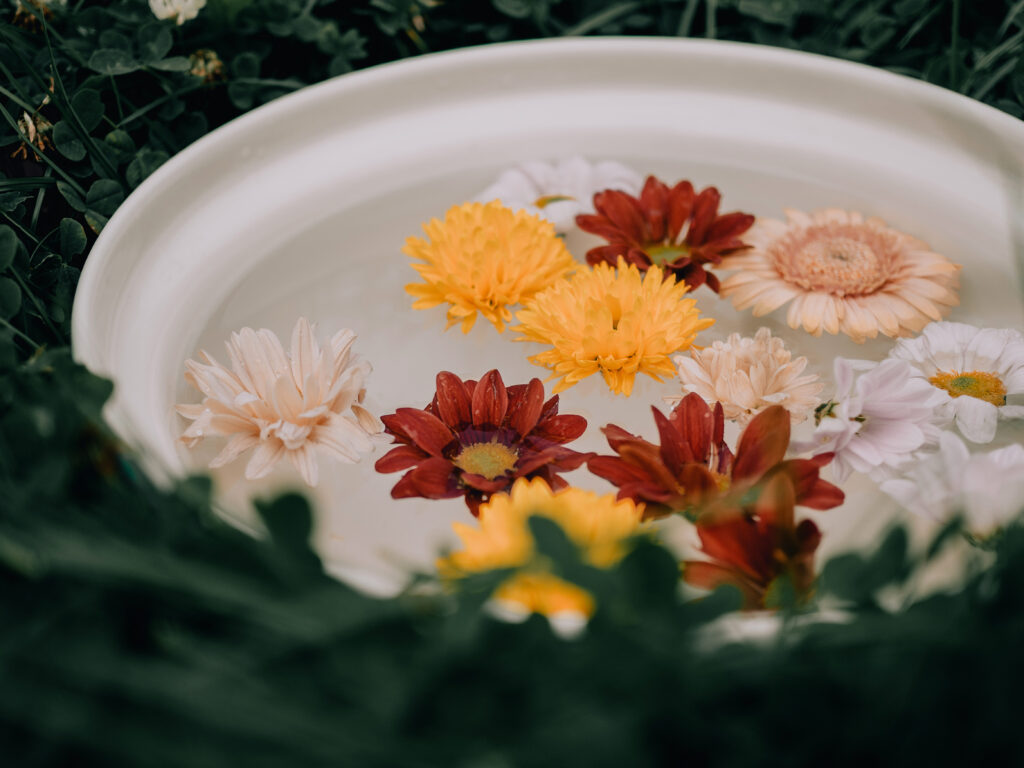
Succulents are a fascinating group of plants known for their unique ability to store water in their leaves, stems, and roots. These resilient plants have become increasingly popular in homes and gardens due to their striking beauty and low-maintenance requirements. With their wide range of shapes, colors, and textures, succulents have captured the attention of plant enthusiasts worldwide. However, beneath their captivating exteriors lies a world of leafy secrets waiting to be unveiled.
We will delve into the diverse world of succulents and explore their unique leaf adaptations. We will discover the various leaf structures and functions that enable succulents to thrive in arid environments. Additionally, we will explore the wide array of leaf shapes, textures, and colors found within the succulent kingdom. By the end of this article, you will have a deeper understanding of the leafy wonders that make succulents such remarkable plants.
- Succulents come in a wide array of shapes, sizes, and colors
- They can be grown both indoors and outdoors, making them versatile plants
- Succulents have unique water-storing abilities, allowing them to thrive in arid conditions
- With proper care and attention, succulents are relatively low-maintenance plants
- They have the ability to propagate easily, making them great for beginners
- Succulents can be used in various types of arrangements, from terrariums to hanging baskets
- Some succulents produce beautiful flowers, adding an extra touch of beauty to any space
- They can be grown in different types of soil, including sandy or rocky environments
- Succulents are known for their air-purifying qualities, improving the quality of indoor air
- The diverse range of succulent species makes them a fascinating subject of study for plant enthusiasts
- Frequently Asked Questions
Succulents come in a wide array of shapes, sizes, and colors
When it comes to plants that are both aesthetically pleasing and low maintenance, succulents are hard to beat. These versatile plants have gained immense popularity in recent years, and for good reason. Succulents come in a wide array of shapes, sizes, and colors, making them perfect for adding a touch of greenery to any space, be it indoor or outdoor.
One of the most intriguing aspects of succulents is their diverse range of leaf structures. From plump and fleshy to spiky and geometric, succulent leaves come in an astonishing variety of forms. This unique leaf diversity is not only visually captivating but also serves a practical purpose for the plants.
Exploring the Leaf Morphology of Succulents
The leaves of succulents are specifically adapted to store water, allowing them to survive in arid environments where water is scarce. This adaptation is what gives succulents their characteristic plump appearance. The leaves are typically thick and fleshy, with a high water-holding capacity.
But it's not just the thickness of the leaves that varies among succulents. The shapes and arrangements of the leaves are incredibly diverse as well. Some succulents have rosettes of tightly packed leaves, while others have long, trailing stems with small clustered leaves. There are even succulents with cylindrical or triangular-shaped leaves.
 Best Low-Light Cactus & Succulents for Indoor Spaces
Best Low-Light Cactus & Succulents for Indoor SpacesAdditionally, the surface of succulent leaves can be smooth, textured, or covered in tiny hairs. This variation in leaf texture not only adds visual interest but also helps to reduce water loss through evaporation. The presence of hairs or a waxy coating on the leaves creates a protective barrier, preventing excessive water loss and allowing the plant to retain moisture for longer periods.
The Kaleidoscope of Colors
Another fascinating aspect of succulents is their vibrant color palette. While most plants display shades of green, succulents break the mold by showcasing a wide range of colors. From deep greens to blues, purples, oranges, and even reds, succulents offer an endless array of hues to choose from.
The pigmentation in succulent leaves is a result of various factors, including genetics, light exposure, and environmental conditions. Some succulents develop vibrant colors as a response to stress, such as intense sunlight or drought. These colors serve as a protective mechanism, shielding the plant from excessive sunlight and preventing damage from dehydration.
Whether you prefer the classic green hues or are drawn to the more exotic shades, there is a succulent out there to suit every taste and style.
The Beauty of Succulents: A Versatile Addition to Any Space
With their diverse leaf structures and kaleidoscope of colors, succulents offer a world of possibilities for plant enthusiasts. Whether you want to create a stunning succulent arrangement, add a touch of greenery to your office desk, or transform your garden into a desert oasis, succulents are sure to deliver.
So, why not explore the leafy secrets of succulents and discover the endless diversity they have to offer? Your journey into the world of succulents is just a plant away!
They can be grown both indoors and outdoors, making them versatile plants
 Exploring Succulents: Discovering Flower-Like Varieties
Exploring Succulents: Discovering Flower-Like VarietiesSucculents are fascinating plants that have gained immense popularity in recent years. Their unique ability to store water in their leaves, stems, and roots allows them to survive in arid conditions, making them excellent choices for both indoor and outdoor gardening.
Whether you have a spacious garden or a tiny apartment, succulents can be easily accommodated. Their versatile nature makes them perfect for any environment, be it a sunny balcony, a windowsill, or a well-lit corner in your living room.
Indoor succulents not only add a touch of greenery to your home but also provide several health benefits. They help purify the air by absorbing toxins and releasing oxygen, creating a healthier living space for you and your family.
On the other hand, outdoor succulents can enhance the beauty of your garden or landscape. With their variety of shapes, sizes, and colors, they can be used to create stunning arrangements, rock gardens, or even as ground cover.
No matter where you choose to grow them, succulents are sure to bring a unique and captivating element to your surroundings.
Succulents have unique water-storing abilities, allowing them to thrive in arid conditions
Succulents are a fascinating group of plants that have adapted to survive in some of the harshest environments on Earth. Their unique water-storing abilities make them resilient to arid conditions, making them a popular choice for indoor and outdoor gardens.
A Guide to the Most Common Types of Succulents and Care TipsThese plants have evolved to store water in their leaves, stems, and roots, enabling them to survive for long periods without regular watering. This adaptation allows succulents to thrive in regions with limited rainfall, such as deserts and arid coastal areas.
Types of Succulents
Succulents come in a wide range of shapes, sizes, and colors, making them a versatile choice for any garden or plant collection. Here are some popular types of succulents:
- Echeveria: Known for their rosette-shaped leaves and vibrant colors, echeverias are a favorite among succulent enthusiasts.
- Aloe: Aloes are known for their medicinal properties and have fleshy leaves with serrated edges.
- Agave: Agaves are large succulents with thick leaves that often have sharp spines at the tips.
- Sedum: Sedums are low-growing succulents with fleshy leaves that come in a variety of shapes and colors.
- Haworthia: Haworthias are small succulents with rosette-shaped leaves that have unique patterns and textures.
These are just a few examples of the diverse range of succulents available to gardeners and plant enthusiasts. Each type has its own unique characteristics and care requirements, adding to the allure of cultivating a succulent garden.
Caring for Succulents
Despite their ability to withstand drought-like conditions, succulents still require proper care to thrive. Here are some tips for caring for succulents:
- Light: Succulents generally prefer bright, indirect sunlight. Place them near a window or in a well-lit area.
- Watering: Water your succulents sparingly, allowing the soil to dry out between waterings. Overwatering can lead to root rot.
- Soil: Succulents require well-draining soil to prevent excess moisture. Use a mix specially formulated for succulents or add perlite to improve drainage.
- Temperature: Most succulents thrive in temperatures between 60-80°F (15-27°C). Protect them from extreme cold or heat.
- Propagation: Succulents can be easily propagated through stem or leaf cuttings. Allow the cuttings to dry and callus before planting them in well-draining soil.
By following these care guidelines and understanding the unique characteristics of different succulent varieties, you can create a stunning succulent garden that thrives and adds beauty to your space.
So, whether you're a seasoned succulent enthusiast or just starting to explore the world of these fascinating plants, embracing their diversity and unveiling their leafy secrets will surely enhance your gardening experience.
With proper care and attention, succulents are relatively low-maintenance plants
 Dormant Succulents: Which Varieties Hibernate in Winter?
Dormant Succulents: Which Varieties Hibernate in Winter?When it comes to indoor plants, succulents have gained immense popularity in recent years. Known for their thick, fleshy leaves and ability to store water, succulents are not only aesthetically pleasing but also relatively low-maintenance. With proper care and attention, these plants can thrive in a variety of environments, making them perfect for both seasoned gardeners and beginners alike.
One of the most fascinating aspects of succulents is their incredible diversity. From the classic Aloe Vera to the unique Haworthia, there are numerous species and varieties to explore. Each succulent has its own distinctive features, such as leaf shape, color, and texture. Some have spiky leaves, while others boast smooth, rounded foliage. The range of colors is equally impressive, with succulents showcasing shades of green, blue, purple, red, and even orange.
Exploring the different types of succulents
When delving into the world of succulents, it's helpful to understand the various categories they can be classified into. Here are some of the most common types:
- Cacti: Cacti are a specific subset of succulents, characterized by their spiky appearance. These desert-dwelling plants have adapted to arid conditions and are known for their ability to survive in extreme temperatures.
- Echeverias: Echeverias are popular for their rosette-shaped leaves and delicate pastel colors. They are often used in succulent arrangements and make stunning additions to any indoor or outdoor space.
- Sedums: Sedums are versatile succulents that come in a variety of shapes and sizes. They are known for their ability to withstand drought and thrive in rocky or sandy environments.
- Agaves: Agaves are larger succulents with bold, architectural shapes. They are native to arid regions and are well-suited for outdoor gardens or as statement pieces in indoor spaces.
- Crassulas: Crassulas, also known as jade plants, are popular succulents with thick, glossy leaves. They are easy to care for and can be propagated easily, making them ideal for beginner gardeners.
These are just a few examples of the diverse range of succulents available. Each type has its own unique characteristics and requirements, so it's important to research and understand the specific needs of the succulents you choose to cultivate.
The beauty of succulents in home decor
Aside from their natural beauty, succulents have also become popular choices for home decor. Their compact size and ability to thrive in various lighting conditions make them versatile additions to any room. Whether displayed in terrariums, hanging planters, or as part of a larger arrangement, succulents can instantly bring a touch of greenery and freshness to your living space.
Moreover, succulents are excellent air purifiers, removing toxins from the air and improving indoor air quality. They can also help create a calming and soothing atmosphere, making them perfect for bedrooms, offices, and other spaces where you want to promote relaxation.
With their diverse forms, colors, and easy-care nature, succulents have undoubtedly earned their place in the world of plants. Whether you're a seasoned plant enthusiast or just starting your indoor garden, exploring the leafy secrets of succulents is a journey that promises both beauty and tranquility.
 Diverse Native Succulents of Southern California
Diverse Native Succulents of Southern CaliforniaThey have the ability to propagate easily, making them great for beginners
Succulents are renowned for their ability to propagate easily, making them a popular choice among gardening enthusiasts, especially beginners. Whether you're looking to expand your succulent collection or share the joy of gardening with friends, propagating succulents is a rewarding and accessible process.
Propagation refers to the process of creating new plants from the existing ones. Succulents have evolved unique adaptations that enable them to propagate through various methods, such as leaf cuttings, stem cuttings, offsets, and even from individual leaves. Let's delve into some of these propagation techniques:
1. Leaf Cuttings
Leaf cuttings are one of the most common and straightforward methods of succulent propagation. To propagate succulents through leaf cuttings, gently remove a healthy leaf from the parent plant, ensuring that it remains intact without any damage. Leave the leaf in a dry and shaded spot for a few days to allow the cut end to callus, which helps prevent rotting.
 Discover the Diverse Range of Shapes and Colors in Succulent Varieties
Discover the Diverse Range of Shapes and Colors in Succulent VarietiesOnce the cut end has callused, prepare a well-draining soil mix containing perlite, vermiculite, or sand. Insert the callused end of the leaf into the soil, ensuring it is partially buried and the other end remains exposed. Water sparingly, as overwatering can lead to rot. With time, new roots and baby plants, known as "pups," will emerge from the base of the leaf.
2. Stem Cuttings
Succulents with a distinct stem, such as Echeveria or Sedum, can be propagated through stem cuttings. Similar to leaf cuttings, select a healthy stem and cut it cleanly using a sterilized knife or scissors. Allow the cut end to callus for a few days before planting it in a well-draining soil mix.
Ensure that the cutting is inserted into the soil deep enough to support itself. Water sparingly and provide indirect sunlight to encourage root development. Over time, the cutting will produce roots, and new growth will emerge from the top.
3. Offsets
 Vibrant Green and Red Succulents: Perfect for Your Garden
Vibrant Green and Red Succulents: Perfect for Your GardenMany succulents produce offsets, also known as "pups" or "babies," which are miniature versions of the parent plant. These offsets can be gently separated from the main plant and planted as individual succulents. Look for offsets that have developed their own root system or have grown to a reasonable size.
To separate an offset, carefully remove it from the parent plant using a sterilized knife or your fingers. Allow the offset to dry for a day or two, ensuring that the wound heals and calluses. Plant the offset in a well-draining soil mix and water it sparingly until it establishes roots and starts growing independently.
Remember, patience is key when propagating succulents. It can take several weeks or even months for roots to develop and new growth to emerge. Ensure that the propagated succulents are provided with adequate sunlight, proper watering, and a suitable growing environment. With practice and care, you'll soon have a flourishing collection of succulents to admire.
Succulents can be used in various types of arrangements, from terrariums to hanging baskets
Succulents are a versatile addition to any plant collection, as they can be used in a variety of arrangements. Whether you prefer terrariums or hanging baskets, succulents are sure to add a touch of natural beauty to your space.
One of the unique characteristics of succulents is their ability to store water in their leaves, stems, and roots. This adaptation allows them to survive in arid conditions, making them perfect for those who may not have a green thumb or live in dry climates.
With their diverse range of shapes, sizes, and colors, succulents offer endless possibilities for creating stunning arrangements. From the popular Echeveria and Aloe Vera to the lesser-known Haworthia and Sedum, there is a succulent to suit every aesthetic preference.
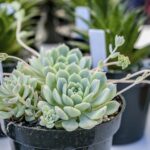 Cascading Succulents: A Guide to Long and Trailing Varieties
Cascading Succulents: A Guide to Long and Trailing VarietiesWhen it comes to terrariums, succulents are an excellent choice. Their compact size and low water requirements make them ideal for creating miniature landscapes inside glass containers. Whether you opt for an open or closed terrarium, succulents will thrive in the controlled environment.
For those looking to add a touch of greenery to their vertical space, hanging baskets filled with cascading succulents are a fantastic option. The trailing stems and vibrant foliage of certain succulent varieties create a visually striking display that is sure to catch the eye.
Types of Succulents for Arrangements:
- Echeveria: With their rosette-shaped leaves and striking colors, Echeverias are a popular choice for succulent arrangements. They come in various sizes and can be easily mixed and matched to create visually appealing compositions.
- Aloe Vera: Known for its medicinal properties and spiky leaves, Aloe Vera is a versatile succulent that adds both visual interest and practical benefits to arrangements.
- Haworthia: Haworthias are small succulents with unique shapes and patterns on their leaves. They are perfect for adding texture and variety to terrariums and smaller arrangements.
- Sedum: Sedums are low-growing succulents that form dense mats of foliage. Their hardiness and ability to withstand harsh conditions make them ideal for rock gardens and outdoor container arrangements.
These are just a few examples, but the world of succulents is vast and full of surprises. Don't be afraid to explore and experiment with different types of succulents to create arrangements that reflect your personal style and preferences.
Some succulents produce beautiful flowers, adding an extra touch of beauty to any space
Succulents are known for their unique ability to store water in their leaves, stems, or roots, allowing them to withstand long periods of drought. But did you know that many succulents also produce stunning flowers? These delicate blooms come in a variety of colors, shapes, and sizes, adding an extra touch of beauty to any space.
One example of a succulent that produces beautiful flowers is the Echeveria. This popular genus of succulents is native to Mexico and features rosette-shaped leaves that come in an array of vibrant hues. When they bloom, Echeverias produce clusters of bell-shaped flowers that can be pink, red, orange, yellow, or even bi-colored. These flowers not only attract pollinators like bees and butterflies but also create a striking visual display.
Another succulent known for its stunning flowers is the Kalanchoe. Native to Madagascar, Kalanchoes are characterized by their fleshy, paddle-shaped leaves and clusters of small, brightly colored flowers. These flowers can be found in shades of pink, red, orange, or yellow, and they often have a tubular shape that attracts hummingbirds. The combination of the vibrant flowers and the succulent's distinctive foliage makes Kalanchoes a popular choice for indoor and outdoor gardens alike.
One more example of a succulent with beautiful flowers is the Aloe vera. While most people are familiar with Aloe vera for its medicinal properties, this succulent also produces striking flowers. Aloe vera flowers are typically tubular and come in shades of orange, red, or yellow. They grow on tall, slender stalks and create an eye-catching contrast against the plant's spiky, green leaves.
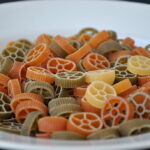 Discover the Most Vibrant and Unique Tri Color Succulent Varieties
Discover the Most Vibrant and Unique Tri Color Succulent VarietiesThese are just a few examples of the diverse range of succulents that produce beautiful flowers. Whether you're a seasoned succulent enthusiast or just starting your collection, exploring the world of succulent blooms can be a delightful journey. So next time you admire a succulent, take a closer look – you may be surprised by the leafy secrets it holds.
They can be grown in different types of soil, including sandy or rocky environments
Succulents are incredibly versatile plants that can adapt to various types of soil. Whether you have sandy, rocky, or even clay soil, these leafy wonders can thrive and flourish. Their ability to store water in their leaves allows them to withstand drought-like conditions, making them a perfect choice for arid environments.
Succulents are known for their air-purifying qualities, improving the quality of indoor air
When it comes to indoor plants, succulents have become increasingly popular due to their unique and striking appearance. However, these fascinating plants offer more than just aesthetic appeal. Succulents are known for their remarkable ability to purify the air, making them a perfect addition to any home or office space.
One of the main reasons succulents are excellent air purifiers is their ability to remove harmful toxins from the air. Through a process called photosynthesis, succulents absorb carbon dioxide and release oxygen, thus improving the air quality around them. This makes them particularly beneficial in enclosed spaces with limited ventilation.
Moreover, succulents are also known for their ability to release moisture into the air. This process, known as transpiration, not only helps to increase humidity levels but can also reduce the presence of airborne allergens and dust particles. By introducing succulents into your living or working environment, you can create a healthier and more comfortable atmosphere.
 The Prolific Succulent World: A Guide to its 'Mother of Many' Species
The Prolific Succulent World: A Guide to its 'Mother of Many' SpeciesAnother reason why succulents are highly regarded for their air-purifying qualities is their efficient filtration system. The leaves of succulents are covered with tiny pores called stomata, which allow them to absorb and filter pollutants such as formaldehyde, benzene, and xylene. These chemicals are commonly found in everyday items such as cleaning products, paints, and synthetic materials, making succulents an effective natural defense against indoor air pollution.
It is important to note that while succulents can help improve air quality, they are not a substitute for proper ventilation and regular cleaning. However, incorporating these leafy wonders into your indoor space can certainly complement these efforts and provide additional benefits.
So, whether you're looking to enhance the aesthetics of your living space or create a healthier work environment, consider adding succulents to your indoor garden. Not only will they bring a touch of nature indoors, but they will also contribute to cleaner and fresher air.
The diverse range of succulent species makes them a fascinating subject of study for plant enthusiasts
Succulents are a group of plants that have adapted to survive in arid conditions by storing water in their leaves, stems, and roots. Their ability to thrive in harsh environments has led to the evolution of a diverse range of species, each with its own unique characteristics and adaptations.
One of the most intriguing aspects of succulents is their leafy secrets. The leaves of these plants come in a variety of shapes, sizes, and textures, making them visually appealing and captivating. From the thick, fleshy leaves of the Aloe vera to the spiky, cylindrical leaves of the Euphorbia trigona, succulent leaves are truly a sight to behold.
Shapes
The shapes of succulent leaves can vary greatly. Some species, like the Haworthia cooperi, have triangular-shaped leaves that form a rosette pattern. Others, such as the Sedum morganianum, have elongated, cylindrical leaves that hang down like strands of beads. The Echeveria elegans, on the other hand, has rounded, spoon-shaped leaves that overlap to form a tight, rosette-like arrangement.
Sizes
Succulent leaves also come in a wide range of sizes. Some species, like the Pachypodium lamerei, have large leaves that can grow up to several inches long and wide. Others, such as the Lithops optica, have tiny, pebble-like leaves that are barely visible to the naked eye. The diversity in leaf sizes among succulents adds to their overall allure and intrigue.
Textures
The textures of succulent leaves can be equally as diverse as their shapes and sizes. Some species, like the Kalanchoe tomentosa, have leaves that are covered in a soft, fuzzy felt-like texture. Others, such as the Crassula ovata, have smooth, glossy leaves that reflect light. The presence of spines and thorns, like those found on the Agave americana, add yet another dimension to the textures of succulent leaves.
Exploring the leafy secrets of succulents is a captivating journey that reveals the incredible diversity and adaptability of these fascinating plants. Whether you are a seasoned plant enthusiast or a curious beginner, delving into the world of succulent leaves is sure to leave you awe-inspired and craving to learn more.
Frequently Asked Questions
1. What are succulents?
Succulents are a group of plants that have thick, fleshy leaves or stems that store water. They are adapted to survive in arid environments.
2. How do I care for succulents?
Succulents are low-maintenance plants. They require well-draining soil, infrequent watering, and plenty of sunlight. Avoid overwatering and provide adequate airflow.
3. Can succulents be grown indoors?
Yes, many succulents can be grown indoors. Choose varieties that tolerate low light conditions and ensure they receive sufficient sunlight or artificial light.
4. How often should I water my succulents?
Succulents have unique water requirements. Water them thoroughly but infrequently, allowing the soil to dry out completely between waterings. The frequency depends on the specific succulent and environmental conditions.
If you want to read more articles similar to Unveiling the Leafy Secrets of Succulents: Exploring Their Diversity, you can visit the Varieties and Colors category.

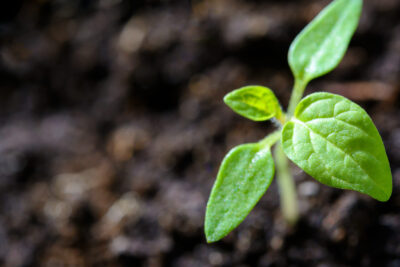
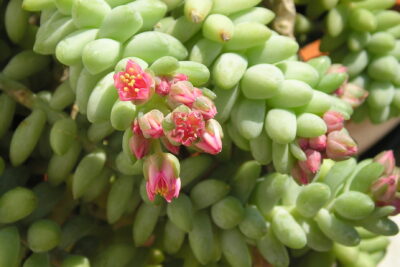



You Must Read